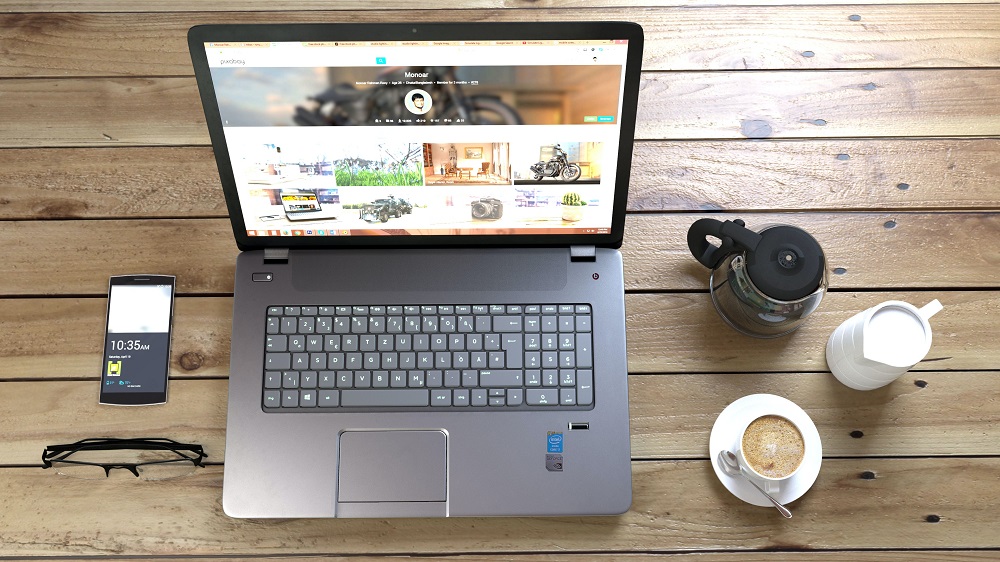Photo by Monoar Rahman
The field of web design is continually evolving, driven by advancements in technology, changes in user behavior, and shifts in design aesthetics. As we step into 2023 and beyond, web designers face new challenges and exciting opportunities to create compelling and user-centric online experiences. In this article, we will explore the future of web design by examining emerging trends and making predictions for the year 2023 and beyond.
Dark Mode Dominance
Dark mode has gained immense popularity in recent years, and it shows no signs of slowing down. Initially introduced as a feature to reduce eye strain and conserve battery life on mobile devices, dark mode has become a design aesthetic that users actively seek and appreciate. It offers a sleek and modern look while creating a better contrast for content and visual elements.
In the future, web designers will increasingly adopt dark mode as a default option, providing users with an alternative viewing experience. Additionally, automatic theme detection based on the user’s system preference will become more common, allowing websites to adapt seamlessly to dark or light mode, depending on the user’s settings.
Voice User Interface (VUI)
Voice technology has revolutionized how users interact with their devices, from smartphones to smart speakers and home assistants. As VUI technology continues to advance, web designers will incorporate voice interactions as a key component of their design strategies.
In 2023 and beyond, we can expect more websites and applications to integrate voice commands for navigation, search, and user engagement. As VUI becomes more accurate and reliable, it will provide an inclusive and convenient way for users to interact with digital content, particularly for individuals with disabilities or those on the move.
Augmented Reality (AR) Integration
Augmented Reality (AR) has been making waves in various industries, including gaming, retail, and education. In web design, AR will play an increasingly significant role in enhancing user experiences. AR integration allows users to interact with virtual elements superimposed on the real world, providing immersive and engaging experiences.
Web designers will explore AR applications for e-commerce, where customers can virtually try on products before purchasing, and for educational platforms, where AR can bring learning materials to life. As AR technology becomes more accessible, expect to see creative and innovative uses in web design that captivate users in ways previously unimagined.
Artificial Intelligence (AI) Personalization
AI-driven personalization has already made its mark in web design, with dynamic content recommendations and personalized user experiences. In the future, AI will become even more sophisticated, allowing websites to anticipate user preferences and tailor content in real-time based on user behavior and historical data.
Websites will use AI-powered chatbots to provide instant customer support, personalize product recommendations, and optimize user journeys. As AI algorithms continue to evolve, web designers will harness this technology to create hyper-personalized experiences that foster stronger user engagement and brand loyalty.
3D and Interactive Visuals
Static imagery is gradually giving way to more immersive and interactive visual elements. Three-dimensional (3D) graphics and interactive elements add depth and dynamism to web design, elevating the overall user experience.
In the future, 3D modeling and animation will become more accessible, enabling web designers to create captivating visuals that engage users on a deeper level. Interactive elements, such as scroll-triggered animations and mouse interactions, will enhance storytelling and guide users through the content seamlessly.
Progressive Web Apps (PWAs)
Progressive Web Apps (PWAs) have been gaining traction as a middle ground between traditional websites and native mobile applications. PWAs offer the benefits of native apps, such as offline access and push notifications, while being accessible via a web browser without the need for installation.
In the future, PWAs will continue to evolve as a preferred solution for mobile experiences. They provide web designers with the ability to deliver fast-loading, responsive, and engaging applications that work across various devices and platforms. PWAs will play a pivotal role in improving user retention and conversion rates, making them a crucial consideration for web design in 2023 and beyond.
Sustainability and Green Design
As environmental concerns become increasingly urgent, web designers will embrace sustainable practices and green design principles. Websites are responsible for a significant amount of energy consumption due to data centers and user devices.
In the future, web designers will prioritize energy-efficient design and optimize web assets to reduce data transfer and minimize loading times. Additionally, websites will feature eco-friendly messages and initiatives to raise awareness and inspire positive action among users.
Cybersecurity and Privacy Focus
With the ever-growing volume of online data and transactions, cybersecurity and user privacy will remain paramount in web design. The future of web design will involve implementing robust security measures, such as HTTPS encryption, two-factor authentication, and regular security audits, to protect user data from potential threats.
Web designers will also strive to make privacy policies transparent and easily accessible, reassuring users that their personal information is handled responsibly and ethically. The trust gained through strong cybersecurity and privacy practices will enhance user confidence and foster lasting relationships between brands and their audience.
As we look ahead to the future of web design in 2023 and beyond, it’s evident that user-centricity, technological innovation, and ethical considerations will shape the industry. Dark mode, voice user interface, augmented reality, AI personalization, 3D visuals, progressive web apps, sustainability, and cybersecurity will be key trends that web designers embrace to create exceptional and immersive digital experiences.
Adapting to these emerging trends will be crucial for businesses and designers seeking to stay ahead of the curve and deliver memorable online interactions that resonate with their audience. By combining creativity, innovation, and user empathy, web designers will continue to pave the way for a more dynamic, inclusive, and engaging digital landscape in the years to come.
Generated by ChatGPT
